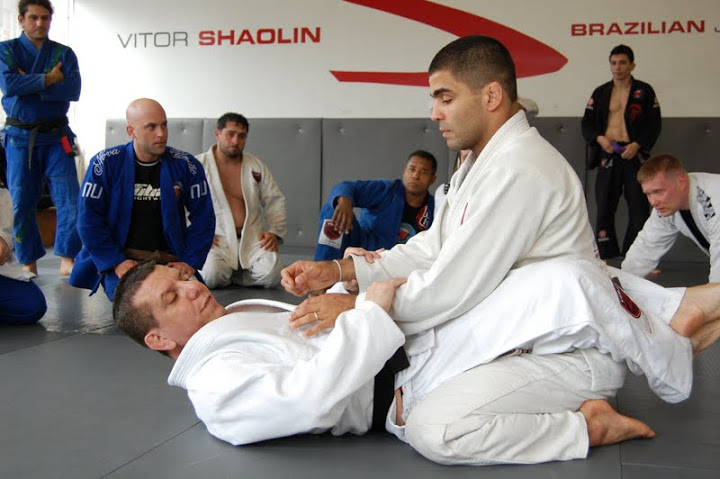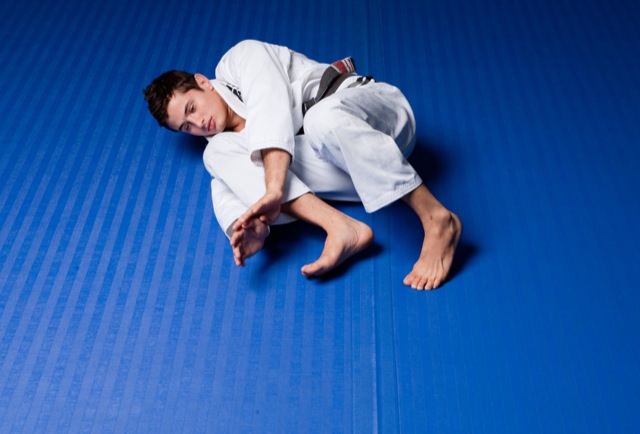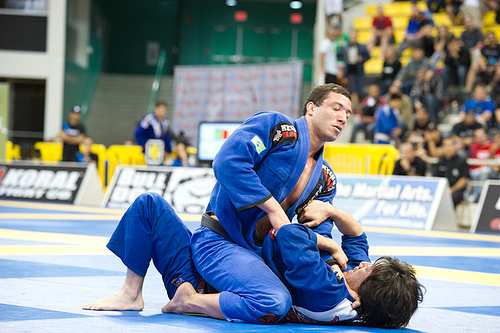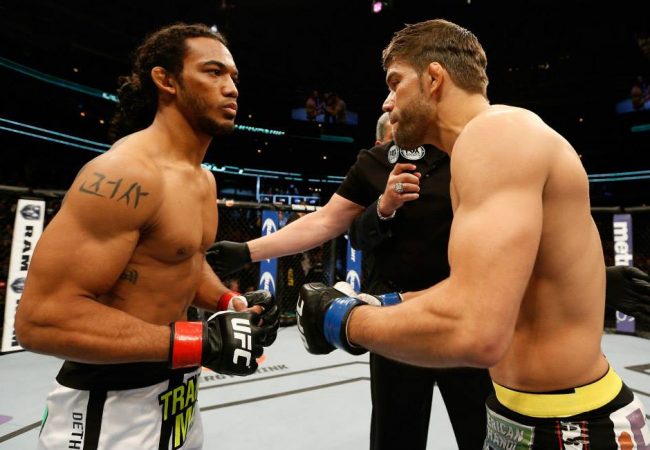
Shaolin in Dedé Pederneiras’s guard in NY: the Jiu-Jitsu professor wants more IBJJF on the East Coast. Photo: Vitor Shaolin TV/publicity.
Vitor “Shaolin” Ribeiro, the 1999-2001 world champion, made his sport Jiu-Jitsu comeback at the World Masters & Senior Championship after nearly a decade without wearing sporting a gi in competition.
“Honestly? I don’t think Jiu-Jitsu has changed one bit,” the Jiu-Jitsu professor living in New York City told GRACIEMAG.com in an exclusive interview.
Shaolin recounted the course he took in making it to lightweight gold, the events of the final and much more. Check out what he had to say:
GRACIEMAG: What’s the lesson for making a successful return after so long away, without competing in the gi?
VITOR SHAOLIN: Well, over the past few years I may not have competed in Jiu-Jitsu, but I had been quite involved with MMA, which certainly helped me a lot. I also had a good while to get ready for the Masters Worlds, so everything went to plan.
How did your path to gold in the lightweight division go? What do you think of the final, against Marcos “Yemaso” Torregrosa?
I kind of locked up in the first match, and when the opponent closed guard on me and came up with some good attacks, I was slow to position myself the way I’d have liked. In the semifinal I was already loose and got my game flowing early on. In the final, my opponent showed he has an excellent open guard. It’s like this: at master you only have six minutes; if you make a mistake it’s over. So I fought patiently, took time in adjusting my grips, and when I started passing his guard, time was already up. I need more time to get used to the six-minute match duration.
Do you feel anything has changed between the Jiu-Jitsu of ten years ago and the Jiu-Jitsu of today?
Honestly, I don’t think it has changed one bit. For sure the physical conditioning is better, but that was never a problem back in my day at the academy.
When will we see you competing in Brazil again?
Whenever I have the time and feel the inclination, I’ll compete wherever. The only obstacle is the academy, because my life has changed a lot. Sometimes there’s no way to think about my training; I have to think about my students’ training.
Is the sport still growing in New York and around the USA?
It certainly is. Jiu-Jitsu has grown by leaps and bounds in the USA; in New York too. Now, we want to see more IBJJF competitions in New York.
What have you learned from your experience teaching your art in New York?
The main thing I’ve derived from these four years in America is this: everything you arrange for beforehand turns out cheaper in the end. It’s about planning, get it? Another lesson I learned is from the movie “The Godfather”: the news you’re getting can be good or bad, but the expression on your face has to be the same when you react in either case.
What about MMA, have you called it quits?
Well, I’m not training in MMA right now. I’m focused on my academy and, now, on training Jiu-Jitsu again.
What’s your take on the success team Nova União has been seeing in the lighter weight divisions of the UFC?
The way I see it, Nova União always did really well at the lighter weights in MMA, but now the events have grown and the exposure is much greater. We have some UFC champions at the academy, and there are certainly more guys coming up through the ranks. I’m really glad Dedé’s [André Pederneiras’s] efforts are bearing fruit.




